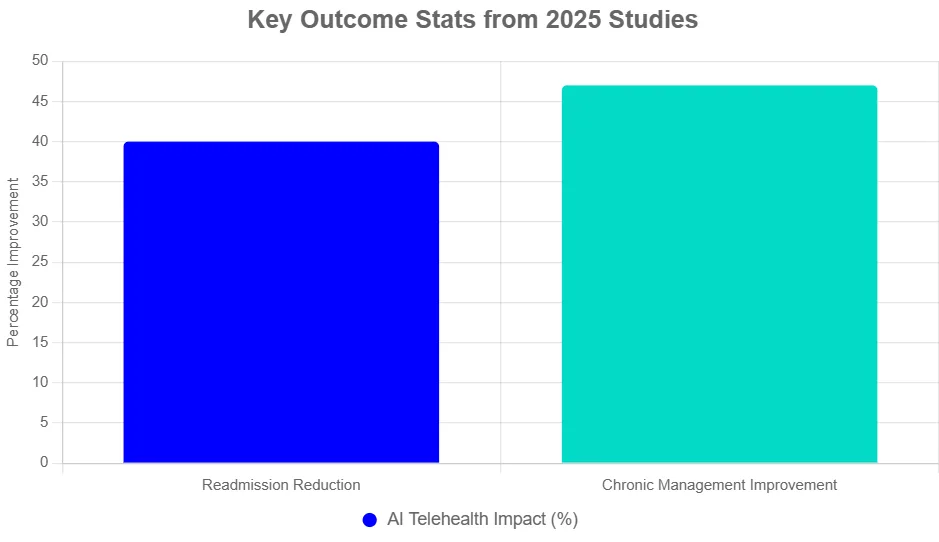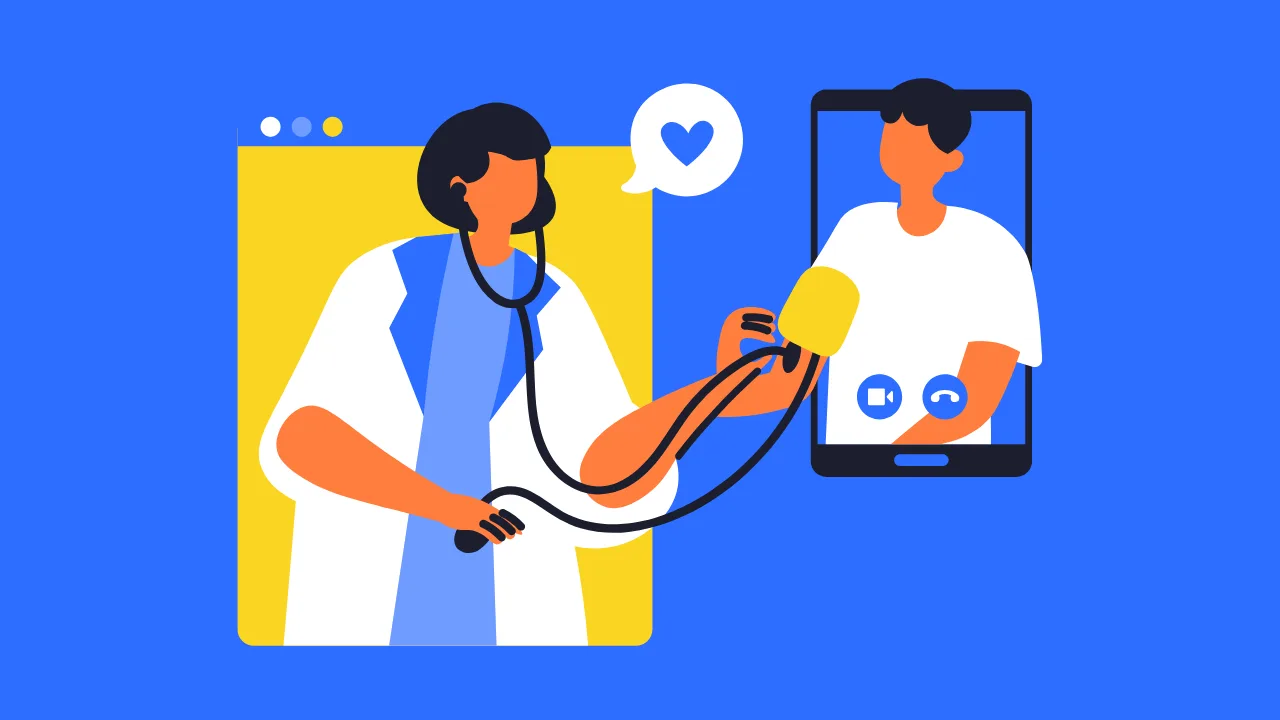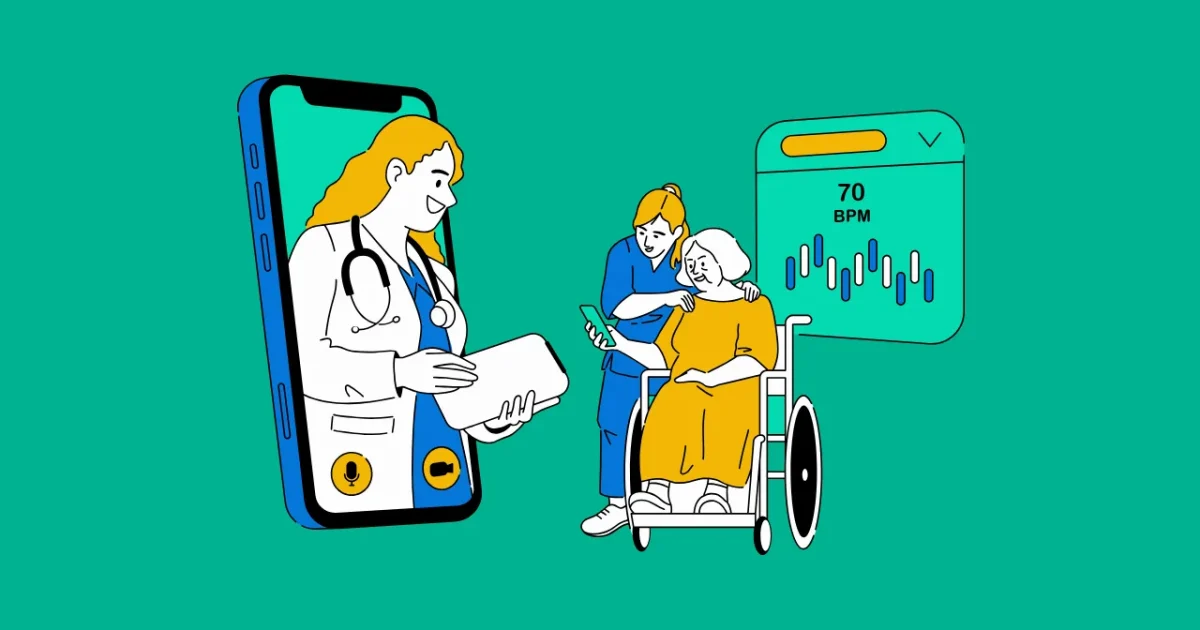Hey there, clinic manager. You’re juggling skyrocketing bills, staff shortages, and patients who need top-notch care right now. It’s tough to cut costs without skimping on quality or access. AI telehealth solutions flip that script. They blend smart tech with remote care to ease your load.
What Are the Benefits of AI Telehealth Solutions?
Think of AI telehealth like a super-smart assistant in your clinic. It handles routine tasks so your team focuses on what matters—patients. This setup mixes video calls, chatbots, and data smarts to deliver care from afar.
The big win? It tackles your pain points head-on. Lower costs meet better access, all while lifting care quality. A 2025 WHO report highlights how digital health tools like these fight inequities and streamline delivery in strained systems. So, what’s the bottom line? These solutions aren’t just trendy—they’re game-changers for busy practices like yours.
Unlocking AI Telehealth Cost Savings
AI telehealth cost savings start with smart automation. It cuts paperwork and no-shows by predicting schedules. Imagine your front desk as a robot that never sleeps.
Here’s a real-world example: A small clinic in Texas used an AI scheduler to match patients with open slots. No more empty chairs or overtime pay.
“AI could significantly reduce inefficiency in healthcare, improve patient flow and experience.” – Dr. Eric Topol, AI in healthcare expert.
Mini-Case Study: Riverside Clinic slashed admin overhead by 30% after adding an AI tool for billing and reminders. They saved $45,000 yearly on staff hours, per their 2025 report. Now, they reinvest in new gear.
Boosting Improved Patient Outcomes
Improved patient outcomes come from AI’s eagle-eye on data. It spots issues early, like a watchful coach reviewing game tape. Your patients get tailored plans that stick.
Take chronic diabetes care. AI apps track blood sugar via wearables and nudge users with tips. One prompt: “Log your meal—AI suggests insulin tweaks based on patterns.”
“AI can help us learn new approaches to treatment… reducing uncertainty in medicine.” – Dr. Regina Barzilay, MIT AI researcher.
Mini-Case Study: Mayo Clinic’s AI remote monitoring cut readmissions by 40% for heart patients in 2025. Follow-ups via app caught problems fast, lifting survival rates by 15%.

Ramp Up Telehealth Efficiency
Telehealth efficiency means faster everything—from bookings to follow-ups. AI triages chats, flagging urgent cases like a traffic cop at rush hour.
Picture this: A patient texts symptoms. AI asks quick questions, then books a video slot if needed. No endless hold music.
“Studies show AI chatbots can cut patient wait times in half, improving the patient experience.” – American Medical Association report.
Mini-Case Study: Cleveland Clinic’s AI triage system handled 25% more consults in 2025 without extra staff. Processing time dropped from 45 to 20 minutes, freeing docs for complex cases.
Enhancing AI Healthcare Accessibility
AI healthcare accessibility opens doors for rural folks or busy parents. It brings experts to phones, like a magic portal to the best docs.
For example, voice AI translates consults in real-time. A Spanish-speaking patient joins a call—AI handles the chat seamlessly.
“AI has enhanced telehealth platforms, making them more intuitive and responsive to patient needs.” – Healthcare AI analyst, 2025 review.
Mini-Case Study: A rural Nebraska network used AI video tools to reach 2,000 more patients in 2025. Travel costs fell 60%, and access scores jumped 35% in surveys.
Delivering 24/7 Access to Care
24/7 access to care via AI means no midnight panics. Chatbots answer basics anytime, escalating to humans as needed—like a night guard with a direct line to the boss.
Real example: An AI bot guides fever checks at 2 a.m., suggesting rest or urgent care based on inputs.
“One of the most significant benefits… is enhancing diagnostic accuracy.” – Telemedicine expert, DrCare247 insights.
Mini-Case Study: Kaiser Permanente’s AI hotline cut ER visits by 25% overnight in 2025. Patients got quick advice, saving $2 million in avoidable trips.
Comparing Top AI Telehealth Tools for Smarter Choices
Quickly pick the right fit with this table. It spotlights tools that drive ROI while fitting your budget.
| Tool Name | Key Feature | Best For | Price | ROI | Cons/Issues |
|---|---|---|---|---|---|
| Teladoc Health | AI personalization & triage | Large hospitals | Custom enterprise ($50+/user/mo) | 40% readmission drop, $150B market savings | High setup costs |
| Doxy.me | Easy video + basic AI chat | Small clinics | $35/user/mo (pro) | 30% admin cut, quick wins | Limited advanced AI |
| Amwell | Remote monitoring AI | Multi-site networks | $99/provider/mo | 50% efficiency boost | Integration learning curve |
| MDLive | Diagnostic AI support | Busy primary care | Custom ($40+/visit) | 25% cost savings | Usage-based fees add up |
Your Step-by-Step Guide to Adopting AI Telehealth
Ready to dive in? Follow these simple steps. They’ll get you up and running fast.
- Assess your needs: List pain points like no-shows or rural access. Talk to your team—what’s the biggest headache?
- Pick a tool: Use the table above. Start small with Doxy.me if budget’s tight. Test a free trial.
- Train your staff: Run a 1-hour demo. Show how AI triages chats—hands-on wins buy-in.
- Launch a pilot: Roll out to one department for 30 days. Track metrics like wait times.
- Scale and tweak: Review data. Adjust based on feedback, then go clinic-wide.
For a code nudge, here’s a basic JavaScript snippet to embed an AI chat widget on your site. It pulls from a telehealth API for quick queries.
// Simple AI Chat Embed for Telehealth
const chatWidget = document.createElement('div');
chatWidget.innerHTML = '<button id="chatBtn">Chat with AI Doc</button><div id="chatWindow"></div>';
document.body.appendChild(chatWidget);
document.getElementById('chatBtn').addEventListener('click', async () => {
const response = await fetch('https://api.yourtelehealth.com/ai-query', {
method: 'POST',
headers: { 'Content-Type': 'application/json' },
body: JSON.stringify({ query: 'What to do for a headache?' })
});
const data = await response.json();
document.getElementById('chatWindow').innerHTML = `<p>AI says: ${data.advice}</p>`;
});
Think of it as adding a friendly greeter to your website. Swap in your API key for real magic.
Is AI Telehealth Right for Your Practice? Quick Self-Assessment
Download this checklist (or jot it down) to score your fit. Tally yeses—if over 7, you’re primed!
- Do you lose $10K+ yearly to no-shows?
- Is staff burnout from admin tasks high?
- Do rural patients skip visits due to travel?
- Could 24/7 basics free up your docs?
- Are outcomes steady but not soaring?
- Budget room for $35/mo tools?
- Team open to quick tech training?
- Metrics in place to track ROI?
- Equity gaps in your patient base?
- Ready for 30%+ efficiency jumps?
Embracing Remote Healthcare Advantages for Tomorrow’s Wins
AI telehealth isn’t a fad—it’s your edge in precision medicine and better patient care. By 2025, it’s projected to save the U.S. $150 billion yearly while lifting outcomes across the board. You’ve got the tools, cases, and steps. Start small, measure big. Your clinic—and patients—will thank you.
Frequently Asked Questions (FAQs)
What are the main AI telehealth cost savings for small clinics?
AI cuts admin by 30% via auto-scheduling and reminders. Expect $20K-$50K yearly wins, based on size.
How does AI improve patient outcomes in telehealth?
It flags risks early, personalizing care. Readmissions drop 40-50%, per top hospitals.
Is 24/7 access to care secure with AI tools?
Yes—HIPAA-compliant platforms encrypt everything. Pick vetted ones like Teladoc for peace of mind.
Can AI telehealth boost efficiency without big changes?
Absolutely. Start with chat triage to halve wait times. No full overhaul needed.
What’s the ROI timeline for AI healthcare accessibility upgrades?
See gains in 3-6 months. Accessibility lifts volume 20-35%, paying back fast.
Loved this? Dive deeper with our post “AI Telehealth Solutions: Your Simple Path to Smarter Healthcare in 2025” on aitooljournal.com. Or drop a comment—how’s AI shifting your practice? Share your story!




